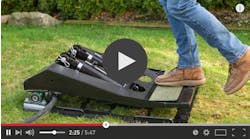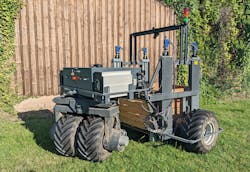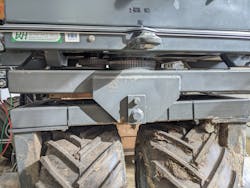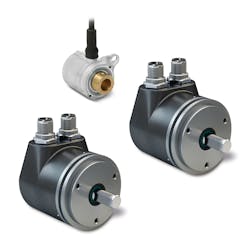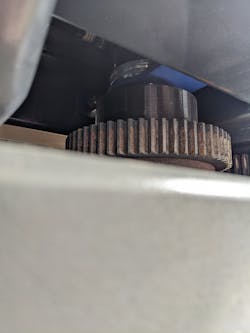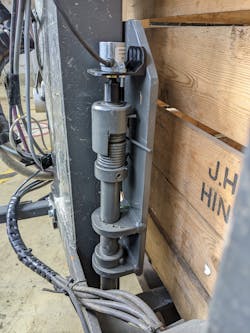SIKO Collaborates on Project for Autonomous Fruit Orchard Harvesting
“AurOrA” (Autonomous Orchard Assistant Altes Land) is a small autonomous vehicle that in the future will move independently around fruit orchards and detect full fruit boxes, pick them up, and take them to a defined unloading point, easing the burden on harvest workers.
The idea for the project comes from practice: fruit farmer Johann Schröder from Jork in the “Altes Land” region southwest of Hamburg asked hochschule 21 in Buxtehude for help in developing an autonomously operating vehicle of this sort.
The project was launched in collaboration with the agricultural equipment manufacturer PWH from Jork in February 2020. The demand for technical support is high among fruit orchard owners and the project is intended to turn into a market-ready, profitable product in the medium term.
The concrete objective of the project is to deliver a functioning prototype by January 2023 in the first instance, which will demonstrate its practical feasibility. The project is funded through the ZIM funding program of the Federal Ministry for Economics.
Second Milestone: Robot Drives Autonomously
The project is currently in the last third of the planning stage, having achieved its second milestone: the robot can already operate largely autonomously in an orchard. Work is still being carried out on avoiding collisions and detecting the ground conditions, to avoid getting the wheels stuck in the muddy ground or drifting off course into a ditch.
Milestone number three will then be to actually pick up a box and transport it.
A project of this sort always poses challenges, starting with the coordination of the interests of various fruit farms, which often have very different harvesting processes, problems with the infrastructure such as a stable cell connection so that the robot can receive GPS data and communicate with the operator, to practical difficulties in day-to-day outdoor operation (weather conditions, snow, rain, sunshine, ground conditions).
SIKO Supports Future Projects
Sensors that carry out various measuring tasks are needed for autonomous vehicles. Measurement and sensor specialist SIKO was called in to work on the steering angle detection and positioning of the box holders.
With many years of experience in mobile machines and agricultural machine technology, SIKO was able to contribute to the planning phase and ultimately came up with two rotary encoder types that support these functions.
“We were pleasantly surprised by the willingness of SIKO to support future-oriented projects and how committed they were in offering their advice. In the beginning, we were not even sure what requirements we actually had for the sensors. We worked all this out and defined it together,” says Alexander Kammann, research assistant at hochschule 21.
Rotary Encoder for Tough Conditions
Potential sensors must be very resilient in the face of tough outdoor conditions such as mud, dust, rain, UV rays, and uneven ground. Components in the PURE.MOBILE range of sensor modules from SIKO are engineered for use in mobile machines under harsh environmental conditions.
A double wheel is fitted to the back of the vehicle, which can rotate and control the steering. The steering angle is recorded, processed, and sent to the controller by the WV5800M magnetic rotary encoder. If the power supply is interrupted, the steering angle previously set is still present. Without an absolute encoder, this would incorrectly be set as the zero degrees angle when the vehicle is started up again.
The high precision and reliability of the rotary encoder allows the vehicle to always adjust its steering angle so that it keeps to its defined path—without failures or deviation from tolerances. In order to increase safety in human-robot interactions, the WV58MR safety variant of the encoder with redundant position detection will be used for future vehicles to prevent failures.
In the development phase, the focus was initially on technical feasibility, so that the rotary encoder without the safety standard was adequate. The plus point of the SIKO models: the two rotary encoders are identical in design so no mechanical adjustments need to be made to the application when swapping them. A CANopen interface was also required for the steering angle detection system so as many electronic components as possible can be used, replaced quickly, and integrated into the system bus.
Position Sensors For the “Flippers”
The second SIKO rotary encoder, the AH25S, is even smaller and more compact. It's a single-turn rotary encoder that monitors the position of the box holders, or the so-called flippers. The filled fruit box is picked up at four points, one flipper for each. When the robot moves over the box and the spring-loaded holders touch it, the flippers swivel to the side, then automatically open, and are then located under the four corners of the box for pick-up.
In order to be able to transport the box safely, the position of each flipper must be known: has it really swiveled back or has it jammed? Are all four flippers under the box to ensure that it's picked up correctly?
The space is very restricted, so a miniature rotary encoder was required which could be used directly without a special holder. An analog encoder is adequate here, as the data is less critical than that provided by the steering angle sensor.
A Harvesting Tool With Real Added Value
Many little cogs have to interlock in a development project of this sort to turn a vague idea into a technically perfect product, which in the future can be used with a balanced cost-benefit ratio in numerous orchards. In order to offer farms genuine added value, the intention is to use “AurOrA” for other maintenance work, too, such as mulching and mowing or as support for planting new trees. Effective use virtually throughout the year is therefore possible and is not just restricted to harvest time.



